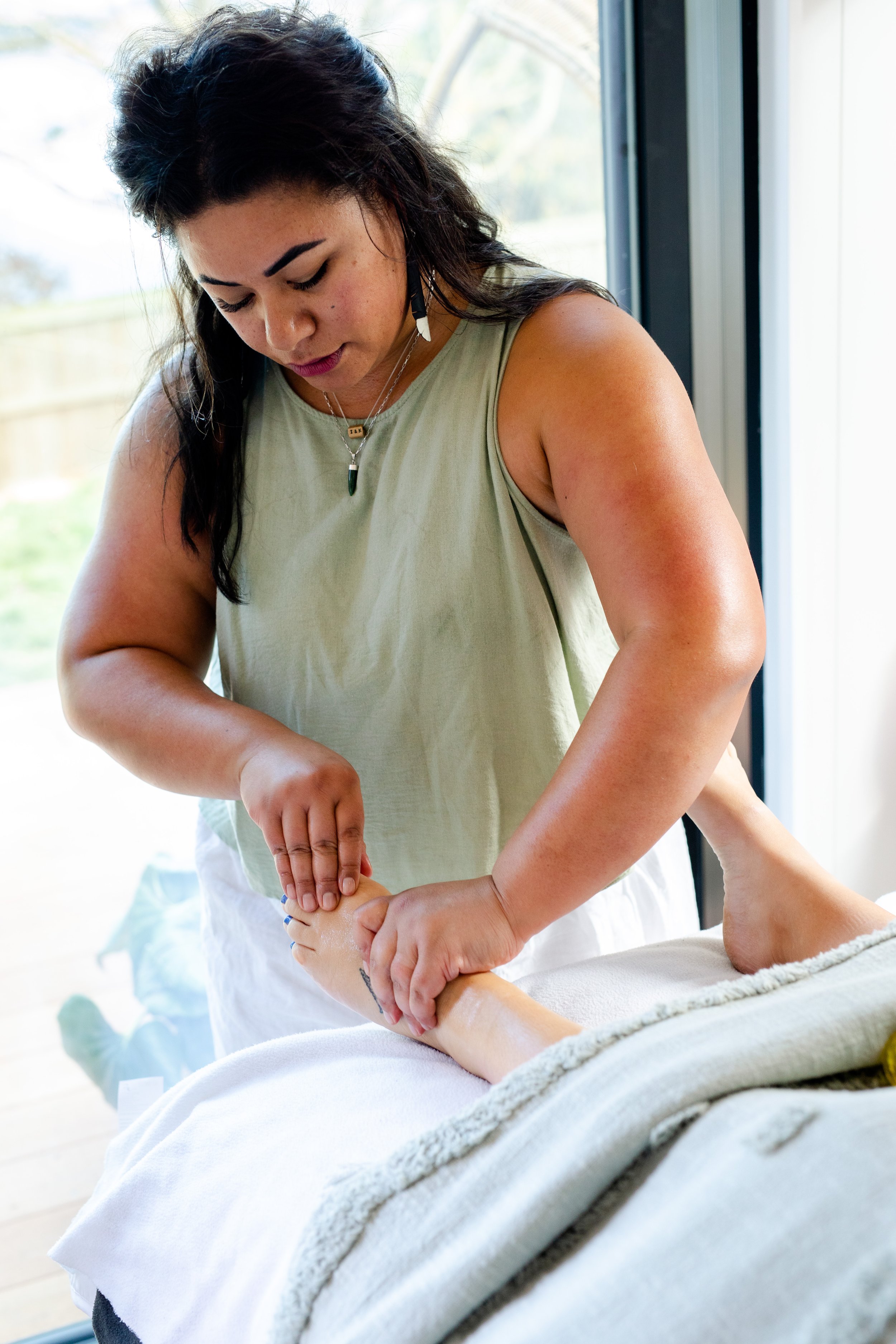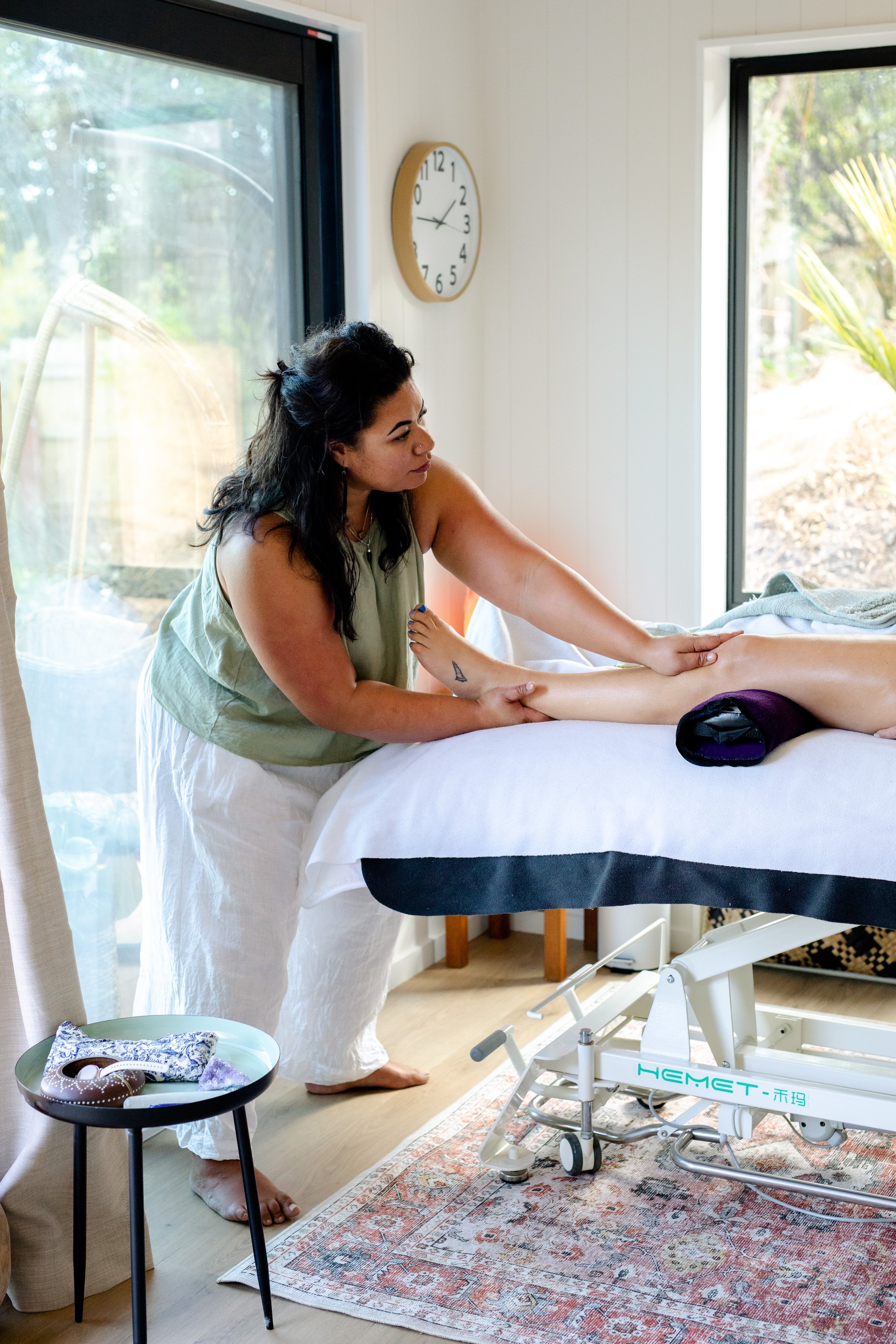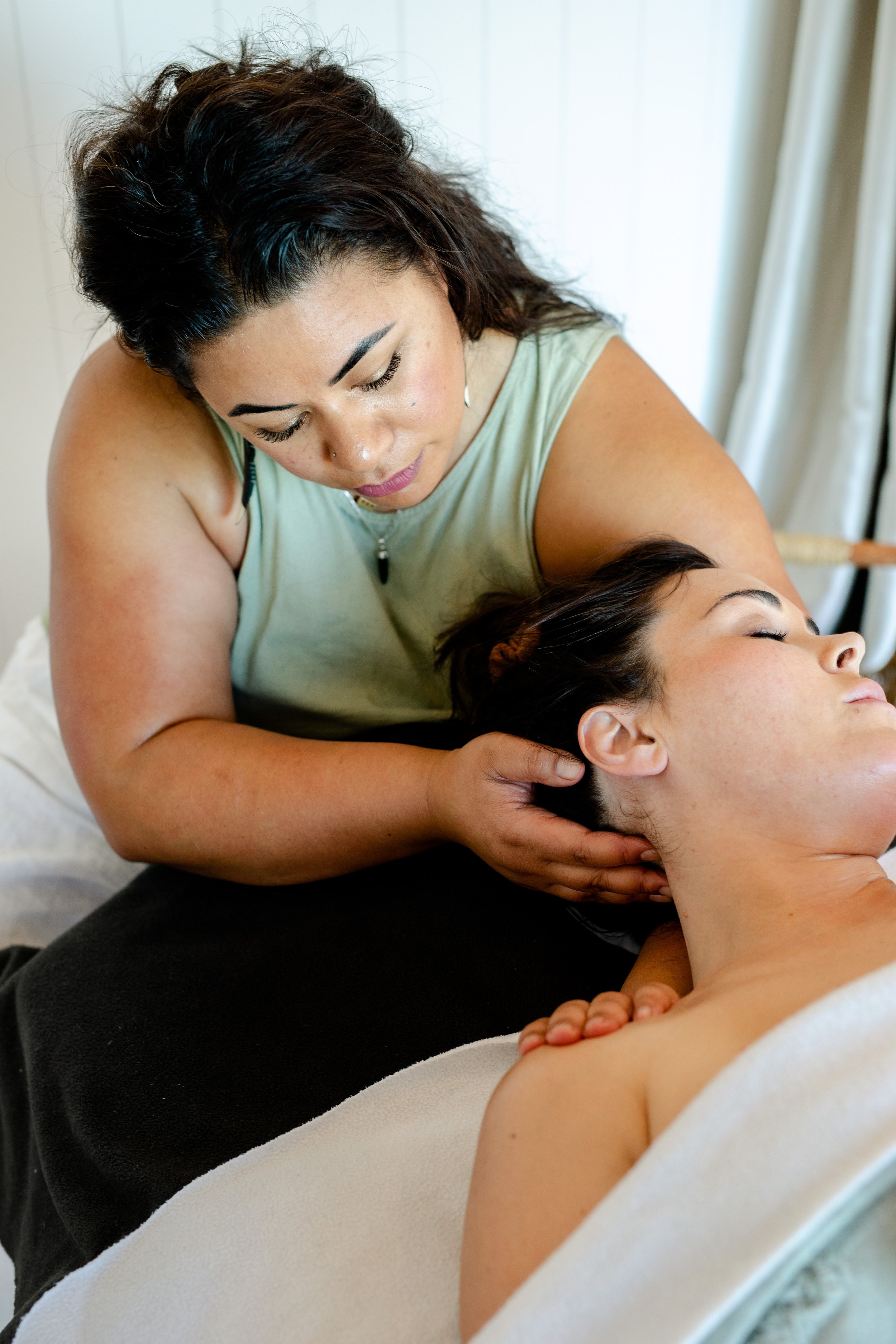NEUROMUSCULAR THERAPY
Neuromuscular, triggerpoint, myofascial and muscle energy testing are remedial treatments to target issues inhibiting your physiological wellbeing.
Neuromuscular and muscle energy techniques are considered clinical massage as they work to improve function of soft tissue by the use of trigger point therapy to alleviate adhesions that disrupt the muscles potential.
Manual lymphatic drainage is another clinical method that corresponds with the lymphatic system to address fluid retention, poor circulation and lymphoedema.
Myofascial work is incredibly affective in releasing structural pull strains and letting go of dysfunctional postural habits that you may not realise contribute to unexplained niggles in the body.
-
1 hour - $100
90 mins - $140
Negotiated payment options are available for weekly clients.
-
Communication is key, please speak up during the treatment if you’re unhappy with the pressure, temperature, need a tissue, or even if you don’t like my music. It’s ok to say what you need. I won’t be offended. I’m more than happy to adjust to your preferences making your experience as comfortable as I can for you.
-
The massage will focus on specific areas of tension and pain, using techniques like trigger point therapy and myofascial release.
The pressure will be firmer than a relaxation massage, but should not be painful. Communicate with the therapist if it becomes uncomfortable.
I will work on releasing tension in specific areas of the muscle, known as trigger points, to relieve pain and stiffness. I may test your muscles to identify areas of weakness or imbalance.




Complimentary therapies are not a replacement for medical care. I encourage you to always seek advice from your GP if you have any serious health concerns. your health and safety ARE my priority so please adhere to these cautionary boundaries.
-
F1ever / Vomiting within the last 24 hours / cold / virus / flu
Intoxification of substance
Infectious skin conditions
-
Local burns or cuts
Recent tendon or ligament ruptures ( unless Physician has approved treatment)
Recent fractures (unless Physician has approved treatment)
Varicose veins
-
Aggressive cancers
Cardiac diseases
Kidney diseases
DVT (deep vein thrombosis)
FAQ
-
There is a designated carpark just for you to the left of the property in front of a white garage, you will see my sign. Park or walk from this side and enter through the white gates and down the hill towards the Te Ihi studio nestled at the bottom of the garden. If you need to use the bathroom beforehand you’re welcome to follow the stairs on the right up to the side door to my house where you will find the wharepaku to the right.
As my studio is located in Lyttelton there is a steepish but short meander through the garden you will need to be prepared to take. For this reason I have not included pregnancy massage because in my experience as a hapū Māmā I was not to steady to walk that distance however I am open to massaging hapū wāhine, please just let me know prior to booking as I can meet you at the gate. This goes for anyone who may have a leg injury or trouble walking up and down stairs.
-
Please be prepared to remove your shoes at the door and any jewellery that might get in the way ie necklaces, bracelets. I would also encourage you to be well hydrated before your treatment as sometimes receiving massage for the first time or after a long time can leave you with a slight headache usually if you’ve not consumed enough fluids beforehand.
-
Massage plays a significant role in injury recovery and prevention by reducing muscle spasms and pain helping relax tense muscles and discomfort. It promotes healthy blood flow, reducing inflammation and swelling, and stimulating the lymphatic system to remove waste products.
Massage helps break down adhesions and scar tissue, promoting healthy tissue repair and flexibility, reducing stiffness and improving range of motion.
Massage reduces stress hormones, promoting relaxation allowing the body’s natural healing processes to enhance the repair of damaged tissues.
Massage helps identify and address muscle imbalances, reducing the risk of injury and improves communication between nerves and muscles, promoting efficient movement patterns.
Massage has anti-inflammatory effects, reducing swelling and pain it is a valuable addition to rehabilitation programs, promoting recovery and preventing re-injury.
By incorporating massage into your training and recovery routine, you can:
- Reduce the risk of injury
- Enhance performance
- Support the healing process
- Promote overall wellness and resilience
-
Remedial massage and relaxation massage are two different types of massage therapy with distinct purposes and approaches.
Remedial massage is a therapeutic massage aimed at treating specific musculoskeletal issues, such as:
- Injuries (e.g., sprains, strains)
- Chronic pain (e.g., back pain, sciatica)
- Scar tissue and adhesions
- Limited range of motion
- Muscle imbalances
I will typically use deep tissue techniques, trigger point therapy, and targeted exercises to address the underlying causes of pain and dysfunction. The goal is to promote healing, reduce pain, and restore normal muscle function.
On the other hand, relaxation massage is a calming and soothing massage aimed at reducing stress, promoting relaxation, and improving overall well-being. It typically involves:
- Gentle, flowing strokes
- Long, sweeping movements
- Soothing pressure
- Calming essential oils (optional)
The goal is to calm the nervous system, reduce muscle tension, and promote a sense of deep relaxation. It's ideal for managing stress, improving sleep, and enhancing overall wellbeing.
While there can be some overlap between the two, remedial massage is more focused on addressing specific issues, while relaxation massage is more focused on promoting overall relaxation and calmness.
-
It's common to feel a little soreness or discomfort after a massage, especially after a deep tissue massage having worked on areas of tension in your muscles. The effects of lactic acid release can occur after massage, this is a natural byproduct of muscle metabolism which can sometimes cause temporary aches. This soreness is usually temporary and resolves within a day or two. It’s similar to the feeling after a good workout because it’s effectively the same physiological response.
